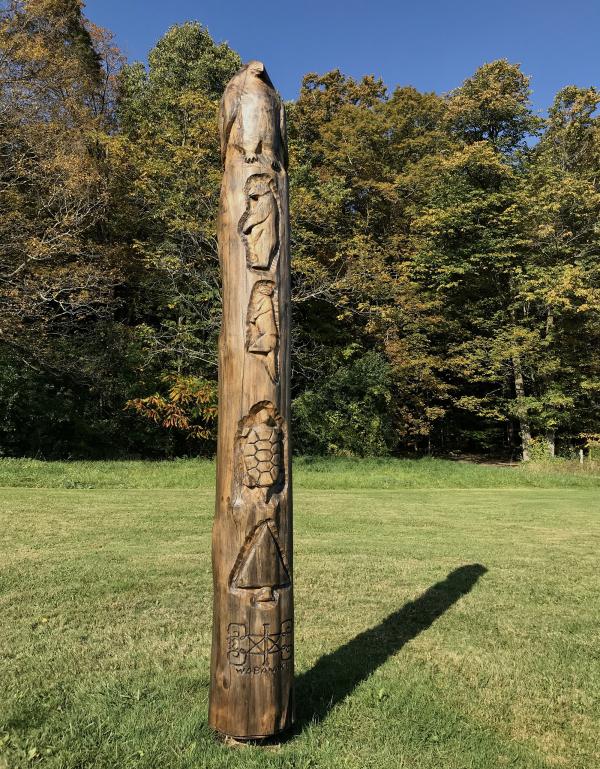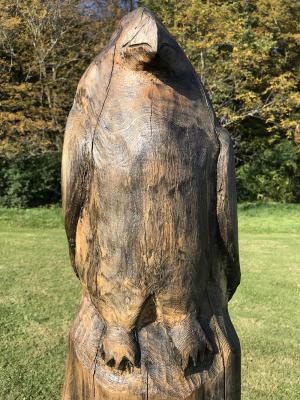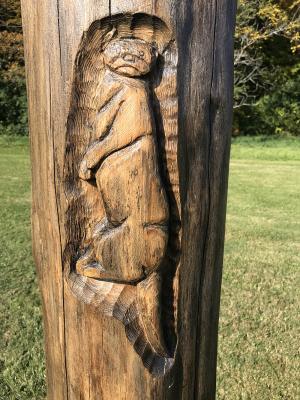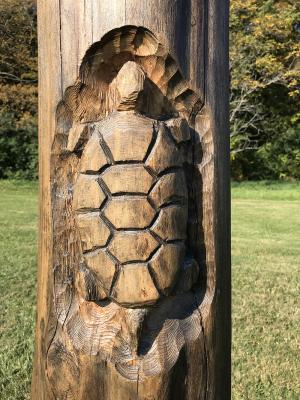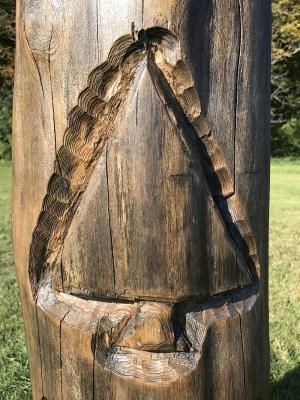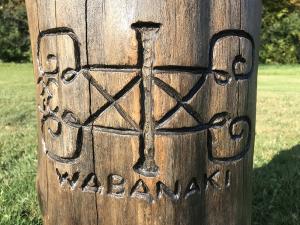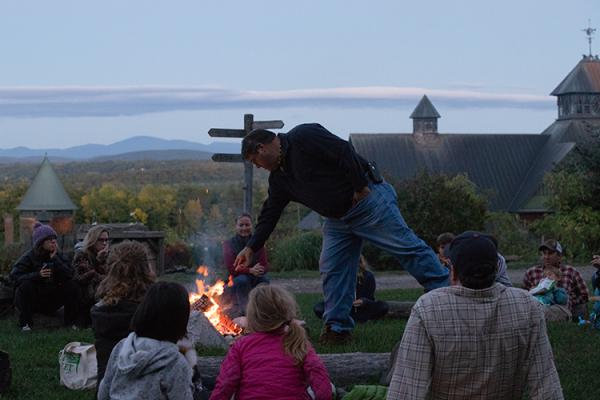Thank you for this inspiring and enlightening look into our local Native American peoples. The Abenaki culture and history serve as a beautiful example of what an entire Civilization should aspire to. There is nothing antiquated about their philosophy, religion and symbols. For me they should be very much alive in the values we need to preserve and practice today among each other.
So beautiful. So soulful. So essential for all of us to follow today.
With gratitude,
Jacques-Paul Marton
Abenaki Totem -- a guide
Below, Abenaki Chief Don Stevens shares the significance of the totem. You can visit and see it for yourself up the hill behind the Farm Barn.
The Bear symbolizes medicine, power, protection, and the Abenaki Bear Clan (interior woodland tribes). The Bear stands at the Western Gate and provides our people with medicines. The majority of the People of the Pines are represented by the Bear. The Abenaki name for Bear is Awasos.
The Otter symbol reminds us to be playful and not be tricked into situations that would destroy the unity of the people. We should always be mindful of the otter in working with other governments. The Abenaki name for Otter is Wnekikw.
The Turtle symbolizes Mother Earth, Turtle Island, and the Abenaki Turtle Clan, which includes those Abenaki Tribes living predominately along the Lake Champlain Basin. The Abenaki name for the Turtle is Tolba.
The Pine Tree symbolizes the tree of life and the “People of the Pines”. There are many spellings in the Abenaki language for this, including Kowa, Coosuk, Cowasuck, and Koasek.
The Wabanaki Confederacy sign is a symbol of unity between the “People of the First Light”. These nations are the Mi’kmaq, Passamaquoddy, Penobscot, Wolastoqiyik, and Western Abenaki people.
May this totem always be a symbol of the historic conference event, our partnership with Shelburne Farms, and be used as an opportunity for people to learn about the Western Abenaki culture.
Comments
Hello, my name is Tyler Mead. I am 20 years old and I know that I am from the Abenaki tribe from my ancestors but i do not know who was that last person in my family to be part of the tribe. I live in Newport of Vermont and and I would like to see if I could become part of the tribe to complete my Native American heritage. If it’s possible to give chief don stevens my email that would be greatly appreciated. I love the Native American culture and I would like to learn more about it and become part of the tribe. Thank you for taking the time to read this. Sincerely, Tyler
where can someone find out the history of Abenaki totems?
